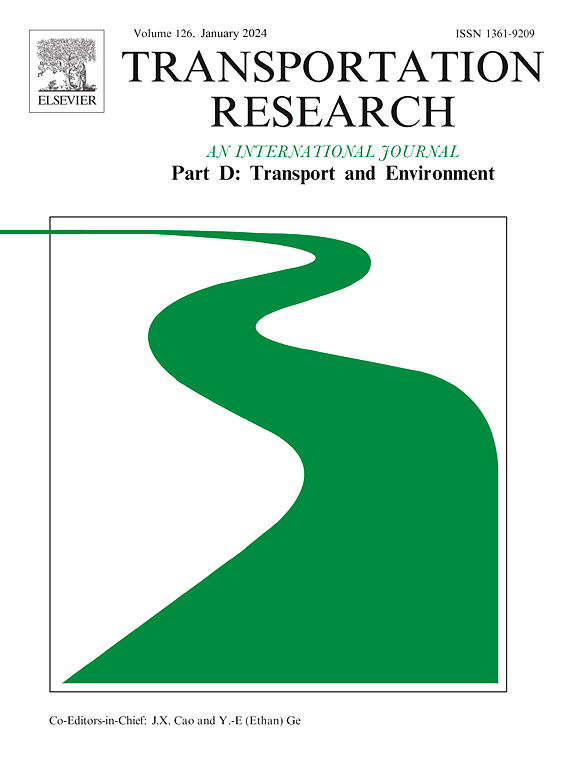Who is aging in the wrong place? evidence from older Americans
IF 7.3
1区 工程技术
Q1 ENVIRONMENTAL STUDIES
Transportation Research Part D-transport and Environment
Pub Date : 2025-02-02
DOI:10.1016/j.trd.2025.104616
引用次数: 0
Abstract
Using data from the U.S. National Household Travel Survey 2017, this study examined who is aging in the wrong place, which I defined as someone who is aged 55 years or older living in a non-urban area without a vehicle. In particular, it explored whether age increases the odds of people living in low-density areas without vehicles, and, if not, what factors do. It also investigated differences of factors related to aging in the wrong place between those aged 75 years and older vis-à-vis those aged 55–64 and 65–74 years. Mixed logit models with random errors of residential location and vehicle ownership levels were applied for those aged 55 years and older and for selected age groups (i.e., 55–64, 65–74, and 75 years and older) to account for unobserved correlations between residential location and vehicle ownership decisions. Results suggested that age did not associate with the odds of aging in the wrong place. Instead, being unemployed (compared to being employed) and women living alone (compared to men living alone) were more likely to age in the wrong place. Additionally, the findings revealed that this phenomenon emerges among those aged 75 and older, but not among younger age groups. Moreover, older (compared with younger) African Americans, Hispanics, and those with low incomes were less likely to own cars and live in non-urban areas. This outcome is consistent across age groups (i.e., 55–64, 65–74, and 75 years and older) for Hispanics and those with low incomes, but not for African Americans aged 65 years and older. Study findings inform transportation service provision for individuals aging in the wrong place, as well as for disadvantaged older people living in urban areas.
求助全文
约1分钟内获得全文
求助全文
来源期刊
CiteScore
14.40
自引率
9.20%
发文量
314
审稿时长
39 days
期刊介绍:
Transportation Research Part D: Transport and Environment focuses on original research exploring the environmental impacts of transportation, policy responses to these impacts, and their implications for transportation system design, planning, and management. The journal comprehensively covers the interaction between transportation and the environment, ranging from local effects on specific geographical areas to global implications such as natural resource depletion and atmospheric pollution.
We welcome research papers across all transportation modes, including maritime, air, and land transportation, assessing their environmental impacts broadly. Papers addressing both mobile aspects and transportation infrastructure are considered. The journal prioritizes empirical findings and policy responses of regulatory, planning, technical, or fiscal nature. Articles are policy-driven, accessible, and applicable to readers from diverse disciplines, emphasizing relevance and practicality. We encourage interdisciplinary submissions and welcome contributions from economically developing and advanced countries alike, reflecting our international orientation.

 求助内容:
求助内容: 应助结果提醒方式:
应助结果提醒方式:


